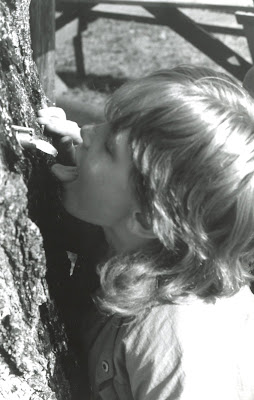David Heiller
The sounds of basketball cut through the chilly air two
nights ago. Α slightly deflated ball
dribbled on the dirt court, which also doubles as our driveway.
The ball
banged on the rim. Α yell of
satisfaction from one boy cut the air as the ball eased over it and through the
net. The other boy grumbled a response, took the ball and dribbled and shouted
and shot.
Basketball in March in Minnesota has its own season, just like spring, summer, fall, and winter. It’s a lot
shorter, but it is still a power to be reckoned with. Especially this year.
This year is special.
I watched
my son and his friend for a few minutes on Sunday night, playing in the light
of the pole barn. Α full moon
was rising to add a touch of class. There was even a comet in the northwest
riding shotgun over the scene.
“Life will never get better than that,” I thought to
myself. You’re 13. Well, that’s not so easy. But with a basketball in your hand
and a week’s worth of Easter vacation beckoning like a fast break, you can’t
complain.
So you pretend you’re Sam
Jacobson, and the clock is winding down against Kentucky, and you get the pass,
and you go up for a jump shot and let the ball go with no time on the clock,
and it swishes.
 |
| David had a unique version of one-on-one that they played nearly everyday. |
Oops. It
clanked off the rim. It didn’t go in. No problem. You were fouled! Two shots, and you’re
down by one point. In goes the
first one. It’s all tied up, folks. In goes the second. The Gophers win the
national title! Α few sound
effects are in order now. Listen to that crowd roar!
I don’t
know if that’s what goes through my son’s mind as he plays outside on these
March days and nights. But I’ve got a hunch it is, if he’s like his old man and
about three million other guys.
When I was his age, we had a
basketball season that always seemed to coincide with the high school tournament.
It wasn’t organized. We didn’t have coaches, or crazy practice schedules, or
100-mile bus rides. A bunch of kids from town would gather and we’d find a cement
driveway that had a basket against the garage, and we’d play.
We weren’t
very good. I’m sure a big city
team would have cleaned our clocks. But we thought we were good, and that was
what mattered. We played fair. We called our own fouls, and were basically
honest.
The night games at the school ground with my brother Danny were the most fun
for me. The ground under the two baskets was bare, due to the fact that the two
baskets represented first base and
third base during the baseball
season. Baseball in Brownsville far exceeded basketball’s comet-like
moment in the sun.
In March, that ground would turn
pretty muddy. It was like playing on a dirty sponge. We’d come home with dirt
ground into our hands and arms and sleeves and jeans. Mom never complained.
 |
| David in about '66 |
Playing alone was fun too. You could
make up your own scenario, be any star you wanted to be. Someone from Edina or
Duluth East, whoever was strarring
in that year’s state tournament. Or even a Minnesota Gopher. And
you always won. I never lost one game at the school grounds when I played by
myself.
One night, playing with my brother,
my foot curled over when I stepped on a
clump of frozen mud. A needle of pain went through my foot, and I screamed and fell down. Danny, being a
true big brother, stole the ball and made the basket while I lay on the ground
in agony.
I didn’t know whether to laugh or
cry. I think I did both. Then he helped me home. Mom took me to the doctor the
next day, and an X-ray showed a broken bone right where I knew it would. Thus
ended the 1966 basketball season.
| David's alma mater, the Minnesota Gophers |
This year it is special also because of the Minnesota Gophers. I don’t know
if they will win the national tale this Saturday and Monday. But listening to them on the radio all year,
and watching them in the NCAA tournament, has been a real treat. It has brought
excitement to our family much like the Twins did in 1987 and 1991.
Go
Gophers. Win or lose, we owe you a big thank you.














